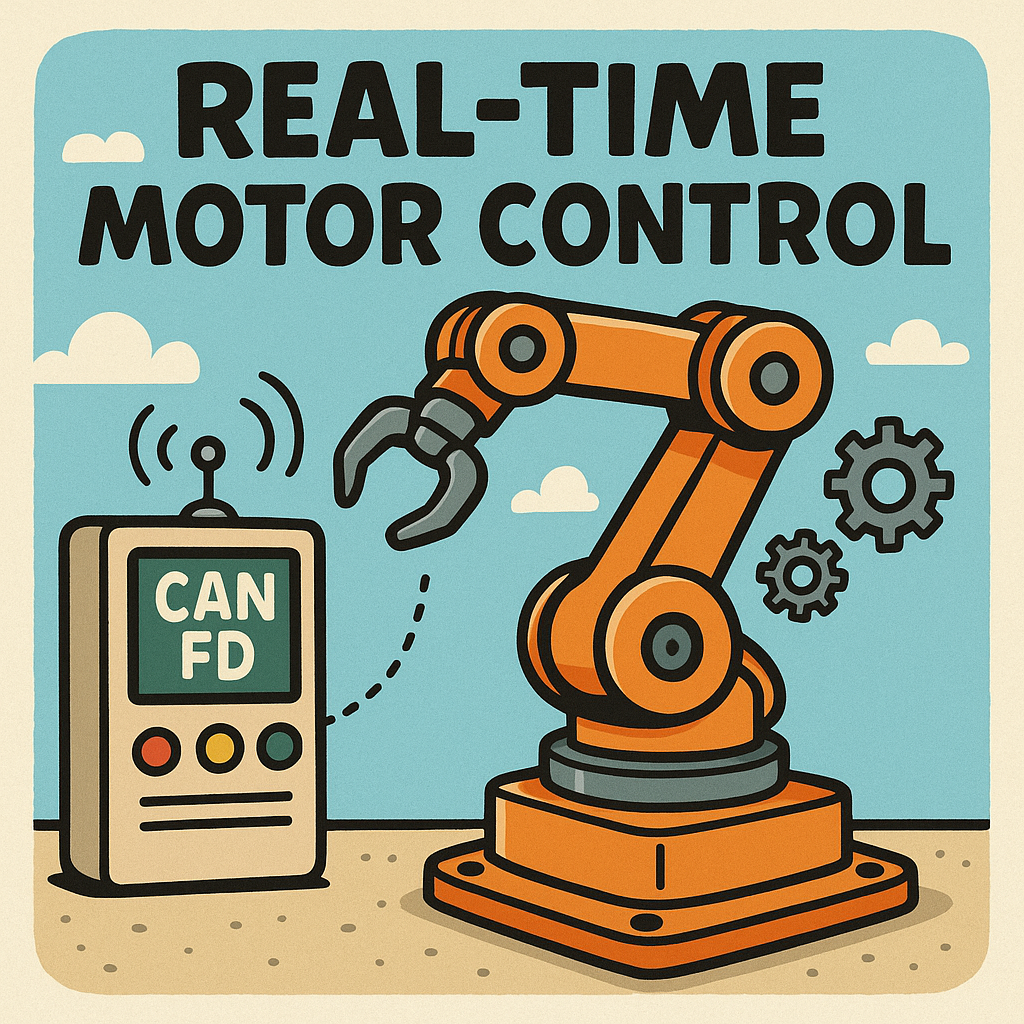Understanding the CAN-FD Protocol in Motor Control
The Controller Area Network Flexible Data-rate (CAN-FD) protocol has emerged as a pivotal communication standard in industrial settings, especially for applications like 6-axis robotics. The need for enhanced bandwidth and flexibility over its predecessor, CAN, makes CAN-FD a compelling choice for real-time motor control. However, integrating CAN-FD into motor control systems presents unique challenges that require careful engineering considerations.
Addressing Bandwidth and Latency Challenges
In 6-axis industrial robots, where precise movement and timing are crucial, the limitations of traditional CAN can hinder performance. CAN-FD allows for data frames of up to 64 bytes, compared to CAN’s 8-byte limitation, facilitating the transmission of larger amounts of data in real-time. This increase in payload size is essential for complex motor control algorithms that handle multiple sensors and actuators simultaneously.
However, with increased bandwidth comes the challenge of managing latency. In scenarios where multiple nodes communicate over the same bus, the risk of message collisions rises, potentially affecting the timing of motor commands. To mitigate this, engineers must implement priority-based message scheduling. By assigning higher priority to critical motor control commands, we can ensure timely execution, thereby enhancing overall system responsiveness.
Firmware Optimization for Real-time Performance
Another critical aspect of optimizing CAN-FD for motor control lies in firmware design. The firmware must efficiently handle incoming messages and execute control algorithms with minimal delay. One effective approach is the use of interrupt-driven programming rather than polling methods. By utilizing hardware interrupts, the microcontroller remains in a low-power state until a CAN message is received, thus saving energy and ensuring faster response times.
Additionally, employing a real-time operating system (RTOS) can further streamline task management. An RTOS allows for the prioritization of tasks, such as sensor data acquisition and motor command execution, ensuring that time-sensitive operations take precedence. This design choice is vital, especially in high-load scenarios where the robot must react to dynamic environments.
Algorithmic Considerations for Motor Control
At the heart of effective motor control is the algorithm employed. Commonly used algorithms in robotics include PID (Proportional-Integral-Derivative) controllers, but their performance can be significantly impacted by communication delays. To optimize this, engineers often adopt advanced control strategies such as Model Predictive Control (MPC) or adaptive control methods that can adjust based on feedback received through the CAN-FD network.
For instance, a PID controller can be augmented with a Kalman filter to predict and compensate for delays in the feedback loop. This adjustment allows the controller to preemptively correct motor positions based on expected changes, improving responsiveness in dynamic applications.
Real-world Design Tradeoffs
When designing a CAN-FD based motor control system for 6-axis robotics, several tradeoffs must be considered. One significant factor is the choice of hardware components. Higher-performance transceivers may support faster data rates but at a higher cost and power consumption. Engineers must balance the need for speed with the overall system budget and power constraints.
Moreover, the physical layout of the CAN network can introduce additional challenges. Longer cable runs can increase message propagation delays and susceptibility to electromagnetic interference. To combat this, careful routing of cables and the use of shielding techniques are essential, as is the placement of termination resistors at the ends of the bus to minimize reflections.
Conclusion: Embracing the Complexity
Optimizing the CAN-FD protocol for real-time motor control in 6-axis industrial robotics involves a multifaceted approach that encompasses hardware selection, firmware design, algorithm choice, and network topology. Each decision plays a crucial role in achieving a responsive and efficient system capable of meeting the demands of modern industrial applications. As we continue to push the boundaries of robotics, understanding these complexities will be essential for engineers looking to harness the full potential of CAN-FD in their designs.



